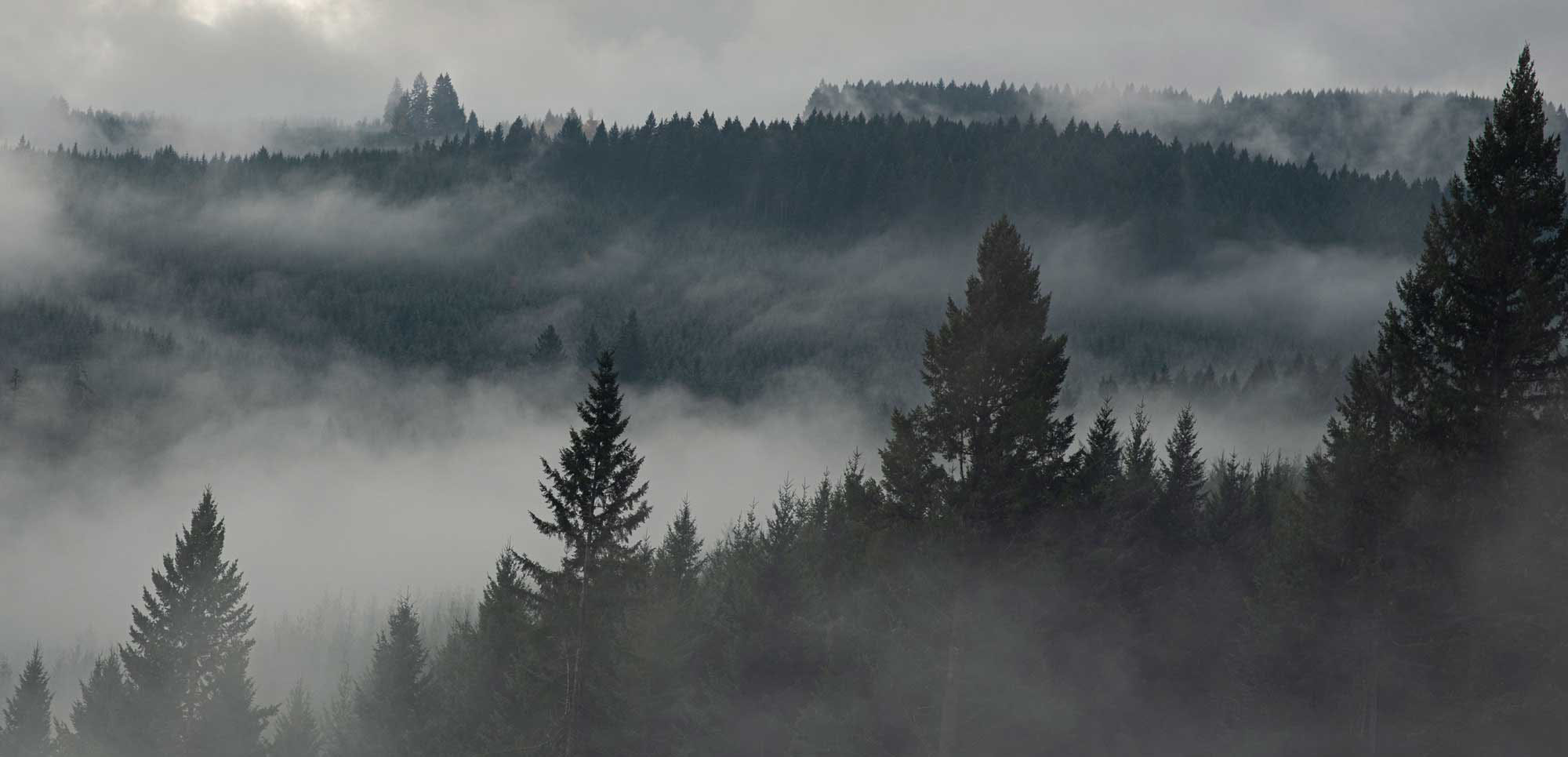Forests play a vital role in our planet’s carbon and water cycles, acting as natural carbon sinks and regulating water flows. Trees absorb carbon dioxide as they grow, storing carbon in both living biomass and the soil.
When managed sustainably, forests not only provide renewable resources but also produce long-lasting wood products that continue to sequester carbon. Maintaining forests as forests and focusing on creating high-value wood products are essential strategies for maximizing the environmental and economic benefits of our forestlands. This section explores how thoughtful forest planning can contribute to climate resilience and sustainable resource use.
Current and expected changes to climate
As a forest landowner, planning for the future means preparing for a changing climate. By understanding current and expected changes, assessing your forest’s unique conditions and adapting management practices, you can enhance resilience and protect your land for generations to come.
Oregon’s forests are experiencing the effects of a changing climate, including:
- warmer temperatures and longer growing seasons
- changes in precipitation patterns, including reduced snowpack and prolonged droughts
- increased frequency and intensity of wildfires
- higher vulnerability to pests, diseases and invasive species due to stress on trees
Understanding these trends helps you anticipate challenges and tailor management practices to protect your forest’s health and productivity.
Climate-smart silviculture
Adaptive silviculture practices can make your forest more resilient to climate stressors while maintaining productivity. One way to increase climate resiliency is through thinning. Reducing the number of trees can improve water availability, decrease competition for nutrients, and reduce susceptibility to drought and pests for the trees that remain. Focus on thinning to remove weaker or less climate-adapted species.
More ways to increase resiliency are to create varied stand structures through variable-density thinning. This technique helps mimic natural processes and enhances biodiversity. And finally, extended rotations allow trees to grow larger, sequestering more carbon and providing higher-quality wood products.
Preparing for wildfires
Climate change is contributing to increasing wildfire risk, but proactive steps can help protect your forest. Visit our reducing fire hazards [link to 1.3.2] page for more extensive information about improving your forest’s wildfire resilience.
Incorporating climate considerations into forest planning requires thoughtful assessment and proactive management. By using site-specific data, embracing adaptive silviculture practices, and preparing for wildfire risks, you can build resilience into your forest while contributing to long-term sustainability.
ADDITIONAL RESOURCES:
PUBLICATIONS
The Oregon Department of Forestry Climate Change and Carbon Plan
This plan outlines the Oregon Department of Forestry’s (ODF) proposed strategies for addressing climate change and enhancing carbon sequestration within Oregon’s forests, detailing goals, actions and collaborative opportunities to promote forest resilience and sustainability.
West Coast U.S. tree species show stronger evidence for shifts in density than range
This study examines U.S. Forest Service data to assess shifts in the ranges and densities of West Coast tree species, finding that while geographic ranges showed limited movement over a decade, species densities shifted in response to changing temperature, precipitation and vapor pressure deficit, reflecting ecological niche adjustments amid varying environmental conditions.
The normal fire environment: Modeling environmental suitability for large forest wildfires using past, present, and future climate normal
This publication models large wildfire occurrence in the Pacific Northwest, projects future suitability under climate scenarios, and highlights increasing fire risks and shorter fire rotation periods, providing valuable insights for resource managers and policymakers.
VIDEOS
Carbon in Oregon’s Managed Forests
Gain insights into the Oregon Forest Ecosystem Carbon Inventory, strategies for managing forests to enhance carbon storage and resilience, and the current and future markets for carbon and co-benefits from Oregon’s forests.
Trees on the Move: Migration of Tree Species in Response to Climate Change
Choosing the right tree species for the right climate is essential, but with climate change, questions arise about forest adaptability, species migration and the role of assisted migration, highlighting the importance of informed tree planting decisions for the future.
ODF Climate Change and Carbon Plan Webinar
A webinar about the development of the ODF Climate Change and Carbon Plan.
OTHER
Oregon Climate Change Research Institute
The Oregon Climate Change Research Institute (OCCRI), established in 2007 by the Oregon Legislature, assesses the science of climate change and its impact on Oregon. OCCRI facilitates climate research, provides accessible information to the public and policymakers, offers technical assistance to local governments, and produces biennial assessments on climate science and its effects on the state. Its efforts have yielded a significant return on investment and support for adaptation strategies across Oregon.
U.S. Forest Service Forest Climate Change website
The U.S. Forest Service Climate Change page provides resources, research and tools to help people understand, mitigate and adapt to the impacts of climate change on forests, grasslands and the communities that depend on them.
Climate Change Resource Center
The Climate Change Resource Center connects land managers and decisionmakers with useable science to address climate change in natural resources planning and management.
The Climate Toolbox
A collection of web tools for visualizing the past and projected climate and hydrology of the contiguous United States.

